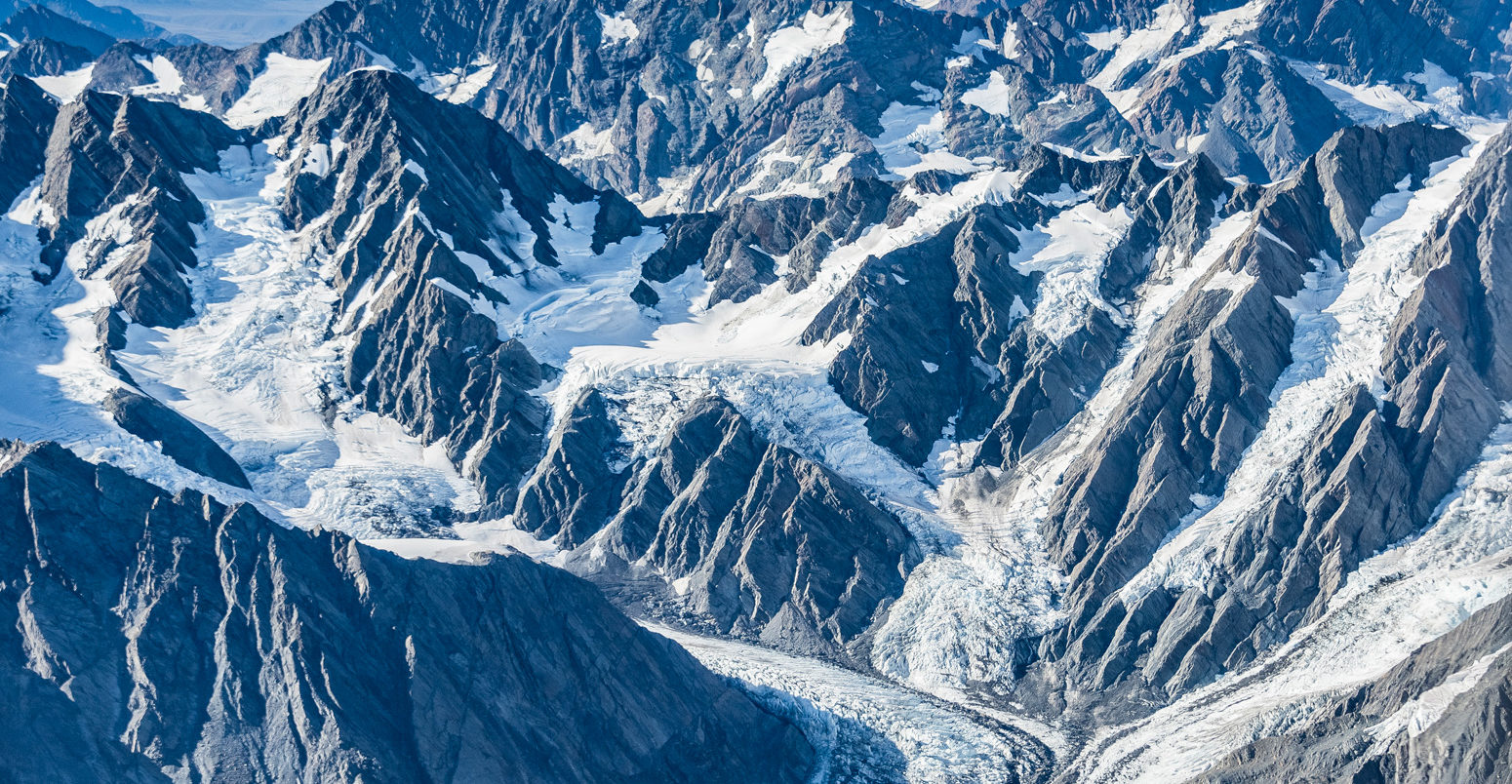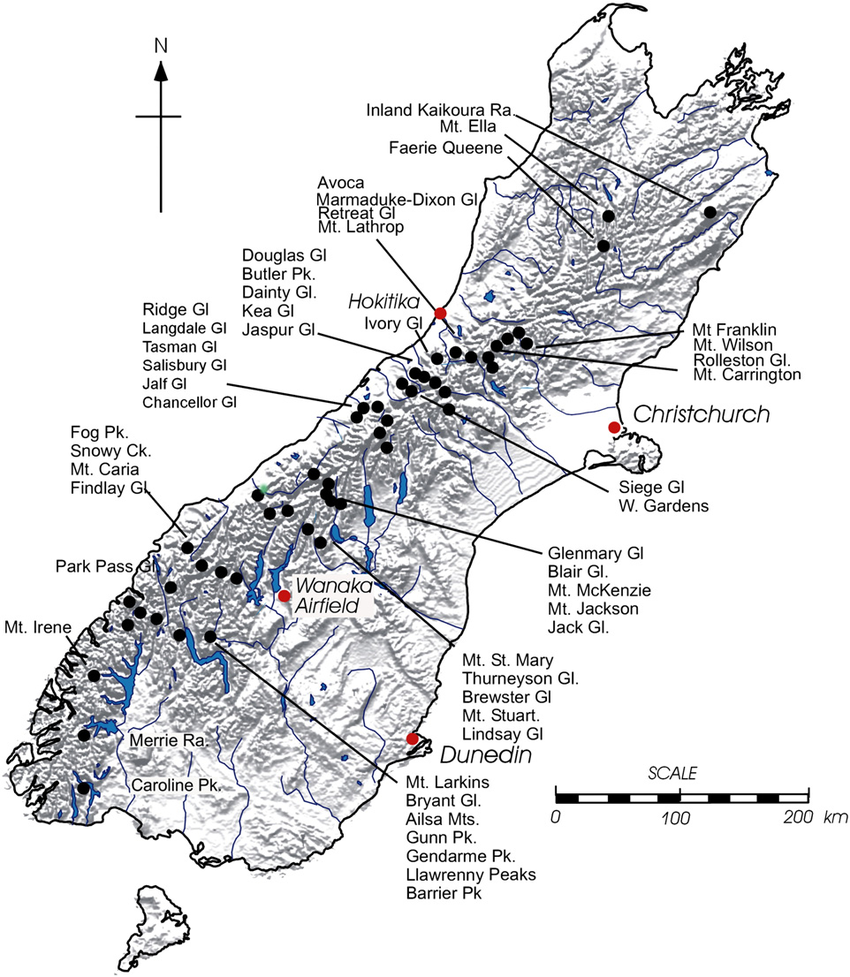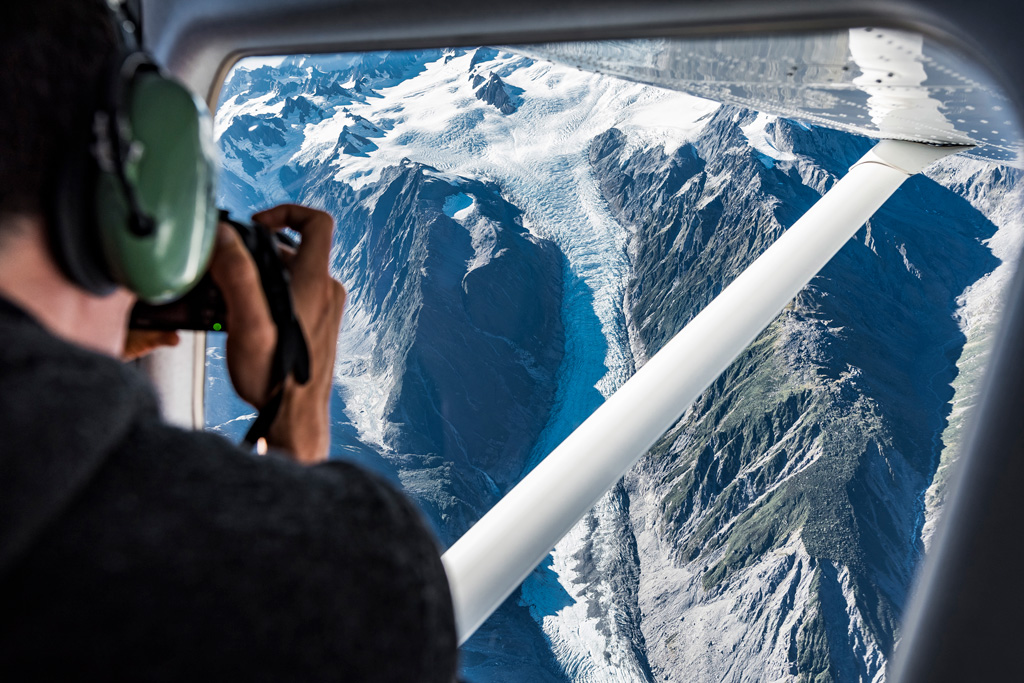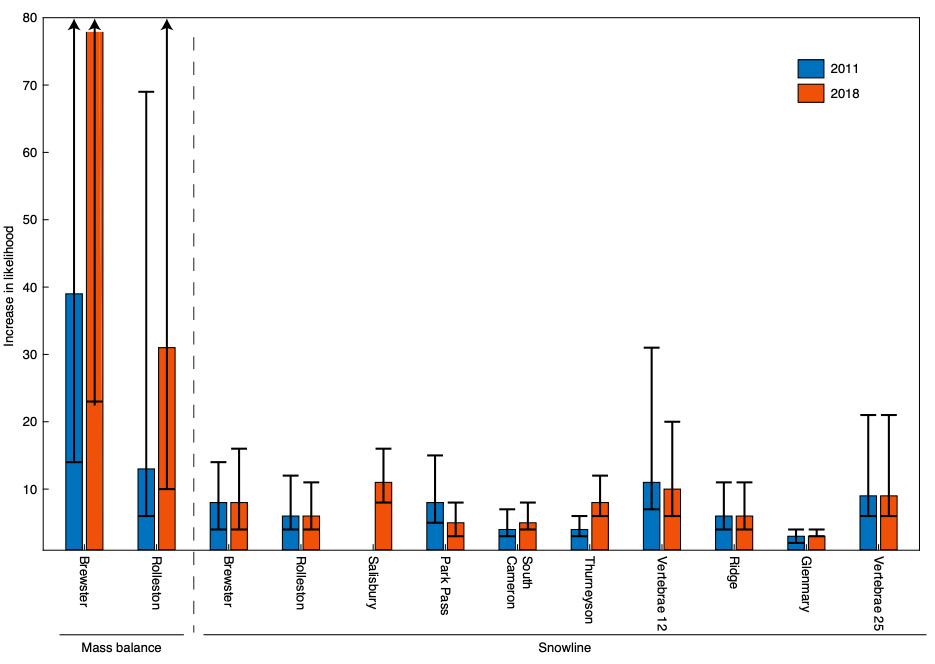
‘Extreme’ glacier loss events linked to human-caused climate change for first time
Daisy Dunne
08.03.20Daisy Dunne
03.08.2020 | 4:00pmThe rapidly evolving scientific field of “extreme event event attribution” has detected the fingerprint of human-caused climate change on a wide range of extreme weather events, including heatwaves, floods, wildfires and drought.
Now, for the first time, scientists have quantified the influence of climate change on specific episodes of extreme ice loss from glaciers.
A new study finds that human-caused climate change made the extreme “mass loss” seen in glaciers in the Southern Alps, New Zealand, in 2018 at least 10 times more likely. Another mass loss event in 2011 was made at least six times more likely by climate change.
The findings are “not surprising”, other scientists tell Carbon Brief, but the authors may have underestimated the impact of climate change on glacier retreat by focusing on individual years rather than multi-year trends.
Out of balance
Research shows that, across the world, glaciers are retreating at an accelerating rate. The ongoing global retreat of glaciers has itself been attributed, in part, to human-caused climate change.
Whether a glacier retreats or advances in the long term depends largely on changes to its “mass balance”. This is the annual difference between how much snow a glacier gains and how much ice it loses through surface melt, avalanches and other processes.
In a year of net mass loss, a glacier has lost more ice than it has gained. However, there is usually a time lag before this loss event translates into glacier retreat, explains Dr Lauren Vargo, a research fellow at the Antarctic Research Centre at the Victoria University of Wellington in New Zealand and lead author of the new study published in Nature Climate Change. She tells Carbon Brief:
“This can range from a few years to 100 years for different glaciers.”
Vargo’s study is the first to examine the influence of global warming on changes to a glacier’s mass balance in a single year.
The results show that human-caused climate change heightened the chances of two years of extreme glacier mass loss in New Zealand’s Southern Alps, says Vargo:
“The results of our work show that the high melt in 2011 was at least six times more likely to have happened with climate change – but could be as high as 70 times. The high melt in 2018 was at least 10 times more likely to have happened with climate change, or as high as 350 times.”
Cool south
New Zealand has around 3,000 glaciers, most of which are found in the Southern Alps, a mountain range extending 500km from north to south along the South Island.

For the study, the researchers examined the influence of climate change on ice loss from glaciers in the Southern Alps in 2011 and 2018. These two years were chosen because they are two of the highest melt years on record for New Zealand’s glaciers.
In the Southern Alps, direct measurements of annual mass balance are available for only two glaciers: the Brewster and Rolleston glaciers (located on the map above).
(Analysis suggests that, from 2016-19, the Brewster glacier alone lost 13m cubic metres of ice – enough to meet the water needs of New Zealand’s total population for three years.)
To understand how the mass balance of other glaciers might have also changed, the researchers relied on “snowline surveys”.
These surveys involve researchers taking aerial photos of each glacier at the end of each summer to record the position of snow on top of it, which gives an indication of its mass balance

The researchers then used glacier and climate models to explore how climate change could have affected the chances of the recorded ice loss in 2011 and 2018.
To do this, they simulated expected ice loss under two scenarios. The first scenario included all of the factors known to affect the climate, including human-caused greenhouse gas emissions, volcanic eruptions and solar variability. The second scenario included all of these factors except for human-caused emissions.
Falling odds
The results show that climate change made the extreme ice loss seen in 2011 at least six times more likely and the ice loss seen in 2018 at least 10 times more likely.
These are conservative average estimates, says Vargo, and the true influence of human-caused climate change on both events could have been much higher.
For example, the mass loss recorded from just Brewster’s glacier in 2018 was made up to 350 times more likely by climate change, according to the results.
The chart below shows the increase in likelihood of mass loss occurring for 10 glaciers with human-caused climate change, when compared to a scenario of no climate change. Results are shown for 2011 (blue) and 2018 (red).
The left-hand side of the chart shows the increase in likelihood for the directly recorded mass balance observations, while the right-hand side shows the results for the snowline surveys.

The chart shows how the estimated influence of climate change on glaciers examined using snowline surveys tended to be much lower than for glaciers examined directly with mass balance measurements.
This could be due to the inability of glacier models to accurately simulate changes to snowlines, the authors say in their paper:
“Snowlines are subject to local influences, including avalanches, and other processes not captured in the mass-balance model used here.”
Future declines
The extreme mass loss events of 2011 and 2018 are likely to contribute to the long-term retreat of glaciers in the Southern Alps, says Vargo:
“Extreme glacier melt events will increase in frequency and severity, especially as extreme heatwaves and marine heatwaves increase in frequency and severity. In fact, since we completed the study, New Zealand glacier melt measured in 2019 was almost as high as the melt in 2018 – and higher than in 2011.”
The results are “interesting”, but “not particularly surprising”, says Prof Jonathan Bamber, a glaciologist from the University of Bristol, who was not involved in the research. (Carbon Brief sat down for an in-depth interview with Bamber in 2019.)
The findings prompt the need for more research, says Dr Fredi Otto, acting director of the Environmental Change Institute at the University of Oxford and co-leader of the World Weather Attribution network. Otto, who also was not involved in the study, tells Carbon Brief:
“The paper is looking at extreme mass loss for glaciers in two individual years. For heatwaves or extremely low or high rainfall, this kind of approach makes sense because the impacts are pretty immediate and felt directly within that year or whatever short timeframe you look at in the study. But for glacier mass balance loss, it is really the accumulation over years and decades that leads to impacts…I think this study actually downplays the role of climate change in mass balance loss overall by focusing on individual years.”
Vargo, L. J. et al. (2020) Anthropogenic warming forces extreme annual glacier mass loss, Nature Climate Change, https://www.nature.com/articles/s41558-020-0849-2
-
‘Extreme’ glacier loss events linked to human-caused climate change for first time
-
Glacier loss in New Zealand’s Southern Alps made more likely by climate change

